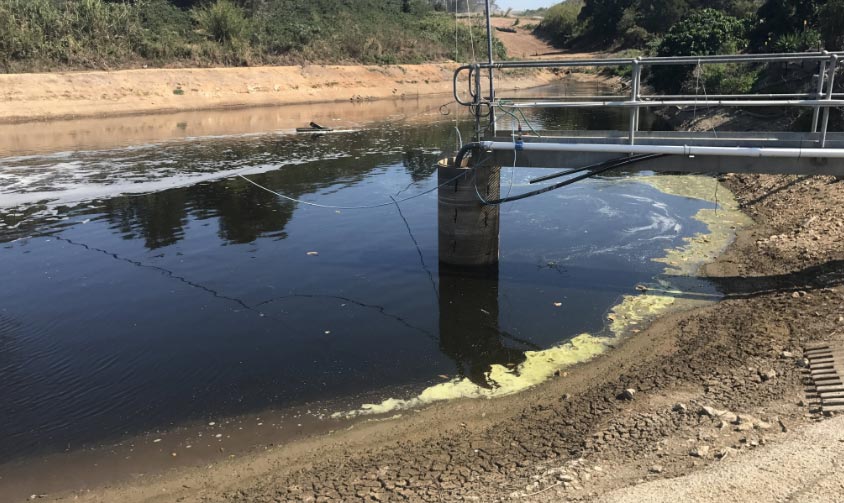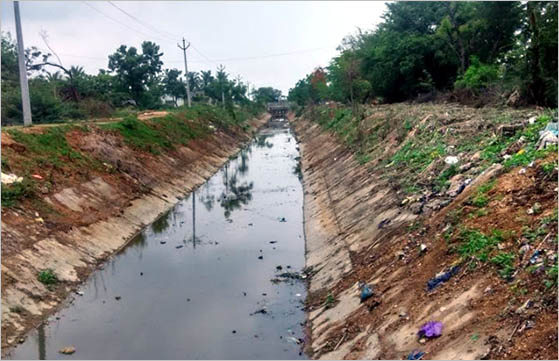Industrial Wastewater Treatment: Advanced Methods for Effective Administration
Industrial Wastewater Treatment: Advanced Methods for Effective Administration
Blog Article
Understanding the Comprehensive Process of Liquid Waste Disposal: Ideal Practices and Environmental Impact Considerations
The management of liquid garbage disposal is a complex issue that calls for a complete understanding of different ideal techniques and their connected environmental influences. From the kinds of fluid waste produced to the techniques used for collection, treatment, and last disposal, each step plays an important role in protecting communities and public health and wellness. As regulative criteria progress and innovation developments, the conversation around these processes ends up being significantly essential. What effects do these adjustments hold for future sustainability efforts, and exactly how can stakeholders make certain that they are appropriately resolved?
Types of Liquid Waste
Recognizing the different kinds of fluid waste is essential for effective monitoring and disposal techniques. Fluid waste can be generally classified into numerous types, each needing one-of-a-kind handling and therapy approaches.
Industrial fluid waste typically consists of harmful materials, including hefty steels, solvents, and chemicals, generated throughout producing procedures. These wastes necessitate rigorous regulative conformity to safeguard human health and the setting. Residential fluid waste mostly describes wastewater created from homes, including sewage and greywater, which, although less toxic, can still position substantial dangers if improperly taken care of.
Agricultural fluid waste, consisting of runoff from ranches, frequently consists of fertilizers and chemicals that can result in ecological degradation otherwise treated appropriately. Clinical liquid waste, produced from healthcare facilities, includes contaminated fluids such as bodily liquids and chemicals, needing specialized disposal approaches to avoid infection and environmental contamination.
Lastly, oil and oil waste, commonly produced by restaurants and auto industries, can cause serious blockages in sewage system systems otherwise managed appropriately. Understanding these groups promotes targeted methods for therapy, compliance with regulations, and efficient disposal approaches, eventually promoting environmental sustainability and public health safety and security.

Collection Techniques
Reliable collection methods are critical for the correct administration of liquid waste, guaranteeing that it is collected safely and successfully before therapy or disposal. Various strategies are employed depending upon the kind of liquid waste generated, the volume, and the specific characteristics of the waste.
One usual approach is using dedicated collection containers or sumps, which are designed to catch fluid waste at the source. These systems frequently integrate pumps that promote the transfer of waste to bigger storage containers or therapy centers. In addition, mobile collection devices geared up with vacuum cleaner technology are employed in scenarios where waste is produced periodically or in hard-to-reach places.
For industrial settings, closed-loop systems can properly reduce spills and leakages, enabling the healing and reuse of fluid waste. It is likewise necessary to educate workers on correct collection methods to minimize threats associated with harmful materials.
Moreover, carrying out regular upkeep timetables for collection equipment guarantees optimum performance and safety and security. The combination of advanced surveillance systems can boost collection efficiency by providing real-time information on waste degrees and prospective risks. In general, reliable collection approaches are foundational to sustainable liquid waste management techniques.
Treatment Procedures
Therapy procedures play a vital duty in the monitoring of fluid waste, transforming potentially harmful products into reusable sources or safe effluents - liquid waste disposal. These processes can be generally categorized right into physical, chemical, and organic techniques, each customized to address details pollutants existing in the waste stream
Physical therapy techniques, such as sedimentation and filtering, job by removing suspended solids and particulate matter. These methods are usually the very first step in the therapy chain, effectively decreasing the tons on succeeding procedures. Chemical treatments entail using reagents to counteract hazardous substances, speed up hefty steels, or oxidize organic pollutants, consequently improving the security of the effluent.
Organic treatment processes, consisting of activated sludge systems and anaerobic digestion, maximize the natural capacities of microbes to degrade natural issue. These methods are especially effective for wastewater including biodegradable pollutants. Advanced therapy modern technologies, such as membrane filtration and progressed oxidation processes, are increasingly utilized to attain higher levels of purification.
Integrating a mix of these therapy methods not just guarantees compliance with governing requirements but additionally promotes environmental sustainability by recuperating important sources from fluid waste.
Disposal Options
How can organizations ensure the safe and responsible disposal of liquid waste? Effective disposal choices are important for guarding public health and the atmosphere. The primary techniques consist of land therapy, incineration, and disposal complied with by discharge right content into community wastewater systems.
Land disposal involves the mindful containment of fluid waste in marked garbage dumps, ensuring that it does not seep into surrounding dirt or water. Incineration, on the other hand, subjects fluid waste to high temperature levels, transforming it right into ash and gases, which require correct purification to lessen emissions. This approach appropriates for contaminateds materials that can not be dealt with through standard ways.
In cases where liquid waste can be dealt with, companies might go with biological or chemical therapy procedures to site web counteract damaging parts before releasing the dealt with effluent right into community systems. This route generally aligns with regulative needs, ensuring that the effluent satisfies safety requirements.
Inevitably, companies have to perform complete assessments of each disposal alternative to determine its viability, taking into consideration factors such as waste make-up, regulatory conformity, and potential dangers to wellness and the atmosphere. By picking suitable disposal approaches, businesses can add to a responsible waste monitoring technique.
Environmental Impact
The environmental effect of liquid waste disposal is an essential factor to consider for companies seeking to minimize their ecological footprint. Furthermore, the discharge of without treatment or improperly treated waste into surface area waters can result in eutrophication, leading to oxygen depletion and the succeeding death of fish and other organisms.

To alleviate these impacts, organizations must adopt ideal methods such as executing extensive waste therapy processes, advertising recycling and reuse, and sticking to regulatory requirements. By taking a proactive strategy to fluid waste management, entities can considerably decrease their environmental footprint while supporting sustainable advancement goals. Eventually, a thorough understanding of the environmental influences related to liquid waste disposal is crucial for educated decision-making and accountable stewardship of natural resources.
Final Thought
Efficient administration of fluid waste is essential for securing environmental stability and public health and wellness. Inevitably, a thorough understanding of liquid waste disposal not only minimizes environmental influences however likewise cultivates a commitment to accountable source management and ecological stewardship.
The management of fluid waste disposal is a multifaceted problem that calls for a complete understanding of different ideal techniques and their connected ecological influences. From the kinds of liquid waste generated to the techniques used for collection, treatment, and final disposal, each step plays a vital function in protecting ecological communities and public health and wellness.The environmental effect of fluid waste disposal is a critical factor to consider for organizations looking for to minimize their environmental impact. Inevitably, a comprehensive understanding of the ecological effects connected with fluid waste disposal is important for informed decision-making and accountable stewardship of all-natural resources.
Eventually, a detailed understanding of fluid waste disposal not just mitigates ecological influences however additionally fosters a commitment to responsible source monitoring and environmental stewardship.
Report this page